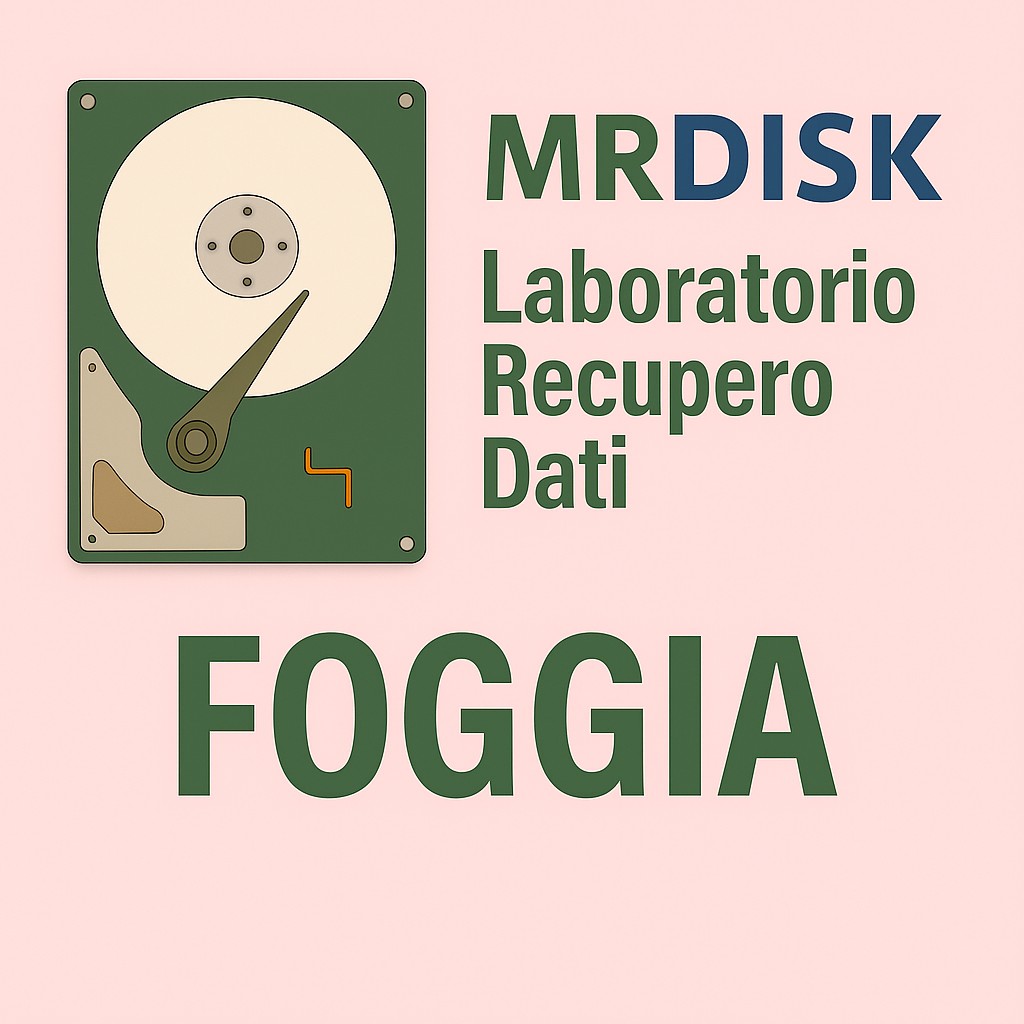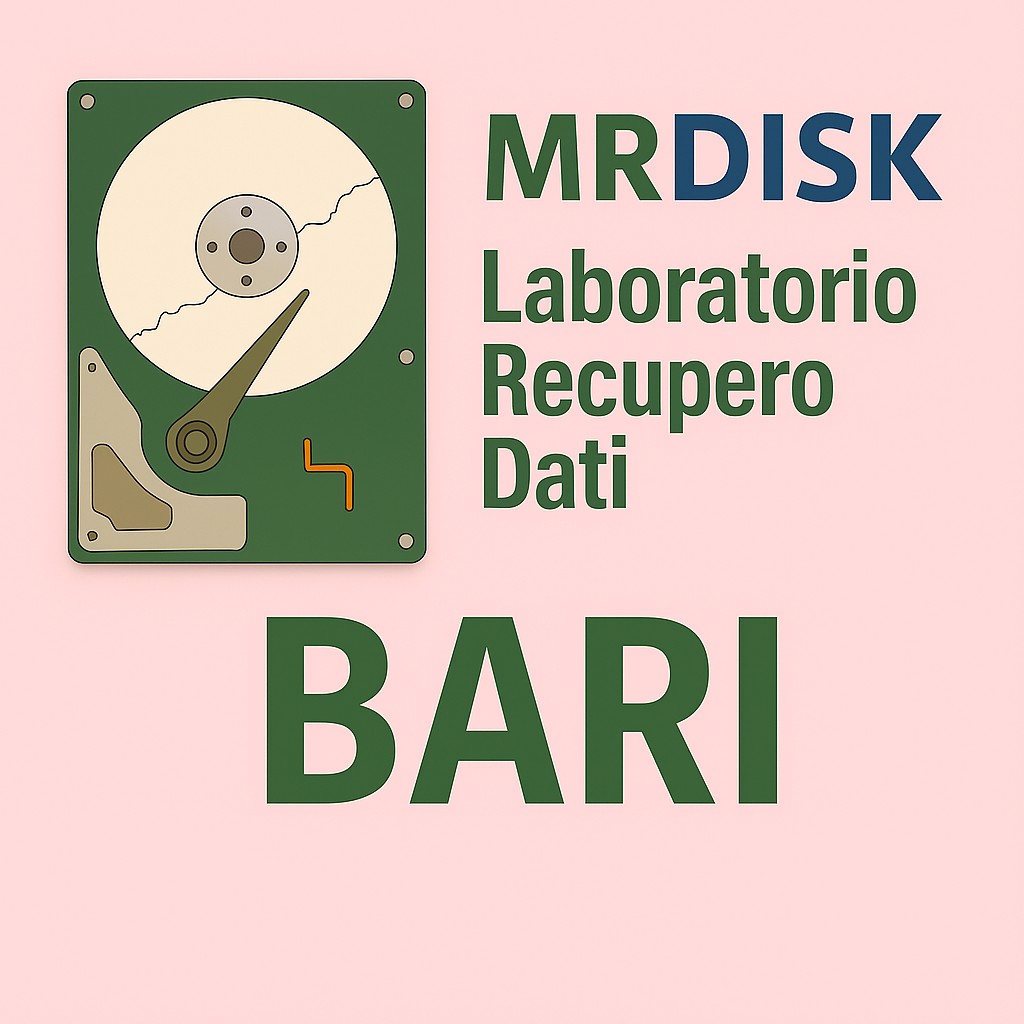Architettura di una Chiavetta USB
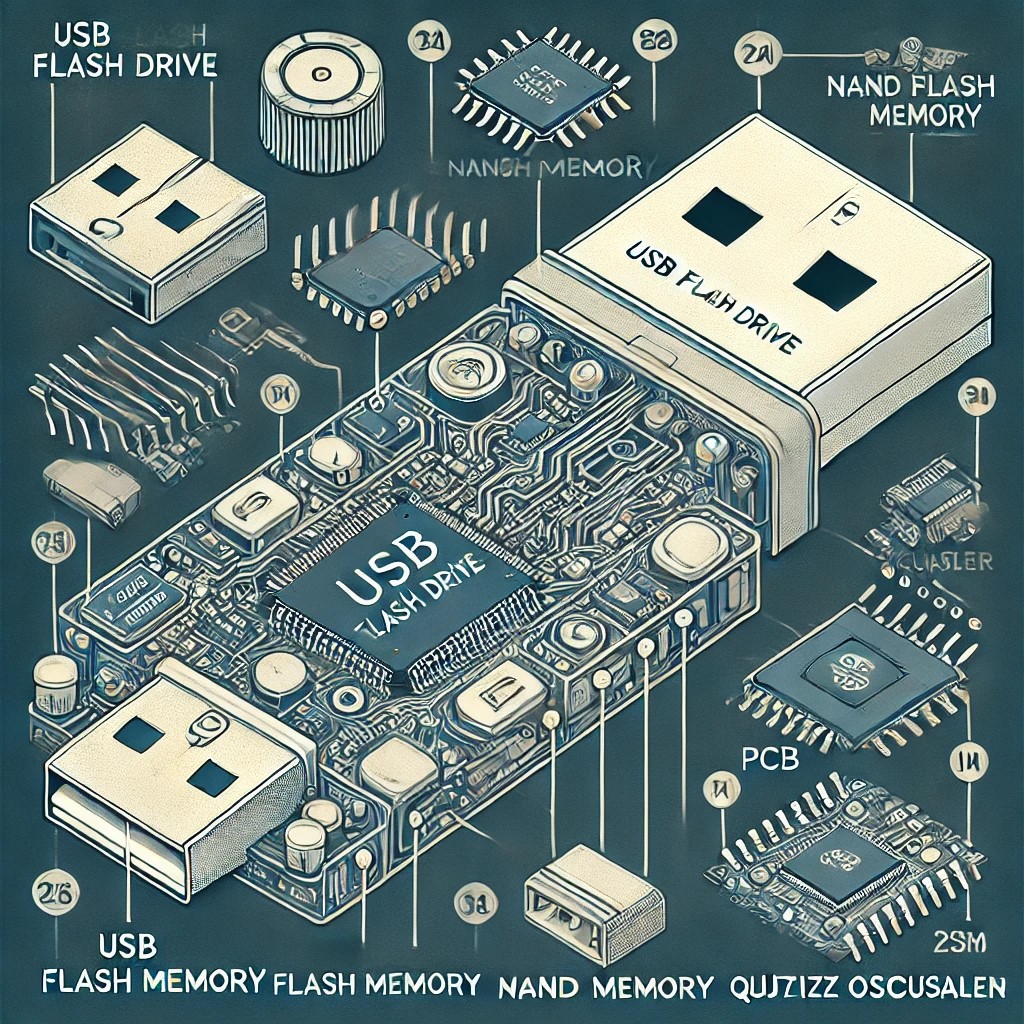

Architettura di una Chiavetta USB: un articolo tecnico che illustra i componenti hardware che permettono il funzionamento di una chiavetta usb.
Le chiavette USB sono dispositivi di archiviazione portatili ampiamente utilizzati per trasferire e conservare dati. Nonostante le loro dimensioni compatte, al loro interno si nasconde un’architettura sofisticata composta da diversi componenti essenziali. In questo articolo analizzeremo la struttura interna di una chiavetta USB e il funzionamento di ogni suo elemento.
Indice della pagina
Struttura di una Chiavetta USB
Una chiavetta USB è composta da diversi elementi hardware che lavorano insieme per garantire l’archiviazione e il trasferimento dei dati. I principali componenti sono:
1. Connettore USB
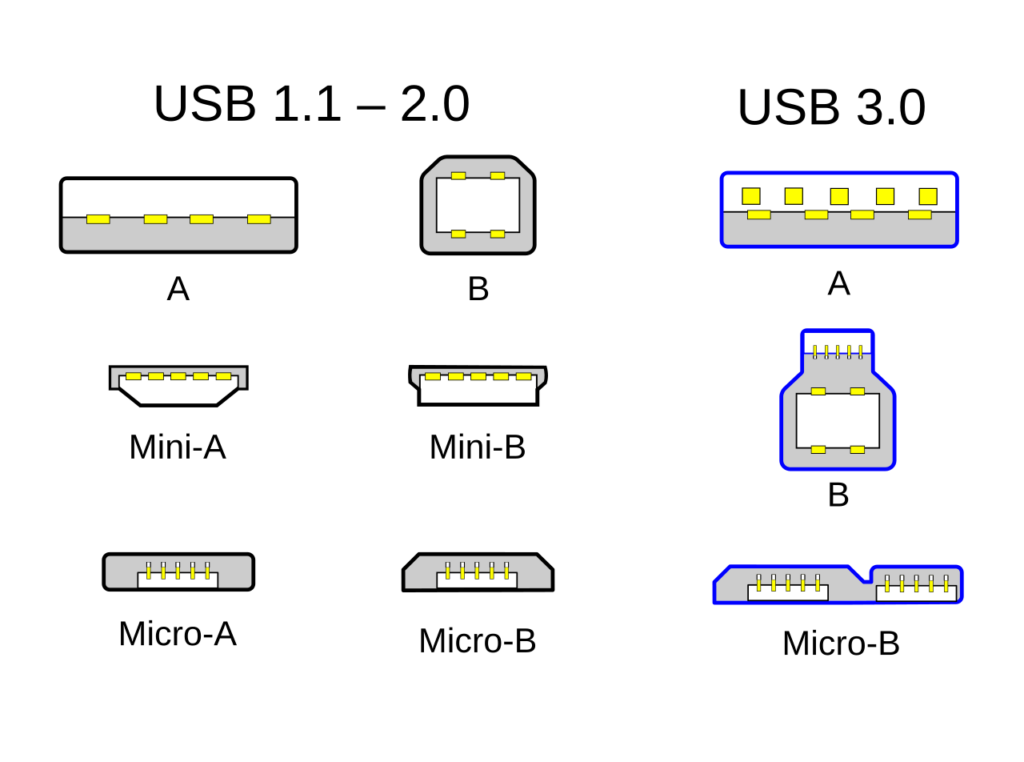
Il connettore USB è l’interfaccia che permette alla chiavetta di collegarsi a un computer o ad altri dispositivi. Esistono diversi tipi di connettori USB:
- USB Type-A: il più comune nei dispositivi tradizionali.
- USB Type-C: più recente, supporta velocità di trasferimento più elevate.
- Micro-USB: utilizzato in alcune chiavette OTG per smartphone e tablet.
2. Controller della memoria
Il controller della memoria è un microprocessore che gestisce le operazioni di lettura e scrittura sulla chiavetta. Ha il compito di:
- Controllare il flusso dei dati tra il dispositivo e la memoria NAND.
- Gestire gli errori di lettura e scrittura.
- Implementare algoritmi di wear leveling per prolungare la durata della memoria flash.
- Gestire i cicli di scrittura e lettura attraverso tecnologie avanzate come ECC (Error Correction Code) per la correzione degli errori.
- Supportare interfacce di comunicazione come ONFI (Open NAND Flash Interface) e Toggle NAND.
3. Memoria NAND Flash
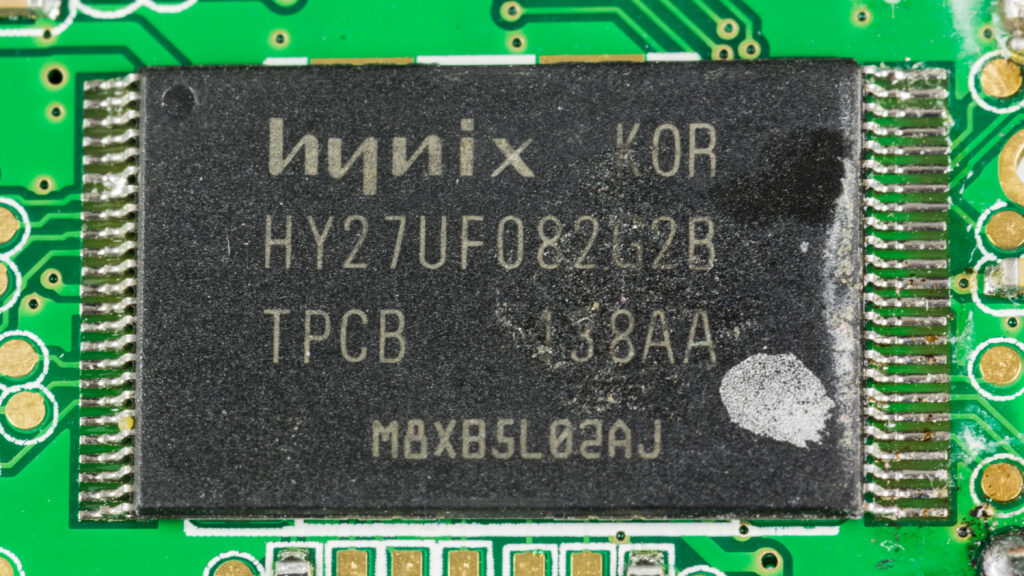
È il cuore della chiavetta USB, dove vengono effettivamente memorizzati i dati. La memoria NAND può essere di diversi tipi:
- SLC (Single-Level Cell): più veloce e durevole, ma costosa.
- MLC (Multi-Level Cell): equilibrio tra prestazioni e costo.
- TLC (Triple-Level Cell): più economica, ma meno duratura.
- QLC (Quad-Level Cell): offre una maggiore densità di archiviazione ma con prestazioni inferiori.
Le memorie NAND moderne utilizzano la tecnologia 3D NAND, che permette di impilare più strati di celle, aumentando la capacità senza occupare più spazio fisico.
4. Oscillatore al Quarzo
L’oscillatore al quarzo fornisce il clock necessario per il funzionamento del controller e della memoria flash. Questo componente è essenziale per la sincronizzazione delle operazioni e garantisce la stabilità del segnale.
5. PCB (Printed Circuit Board)
La scheda a circuito stampato collega elettricamente tutti i componenti della chiavetta USB, garantendo la trasmissione dei segnali tra il controller, la memoria e il connettore USB. Alcuni modelli di chiavette più avanzate presentano PCB a più strati per migliorare le prestazioni.
6. Chip di Protezione e Alimentazione
Alcune chiavette includono circuiti di protezione che prevengono sovratensioni, cortocircuiti o danni dovuti a sbalzi di corrente durante l’uso. Inoltre, è possibile trovare sistemi di crittografia hardware AES-256 per la protezione dei dati sensibili.
Funzionamento di una Chiavetta USB
Quando una chiavetta USB viene inserita in un computer, il sistema operativo la riconosce attraverso il controller USB, che negozia il protocollo di comunicazione e fornisce accesso ai dati contenuti nella memoria NAND. Le operazioni principali che avvengono sono:
- Rilevamento e Inizializzazione: Il sistema operativo identifica la chiavetta e carica i driver appropriati.
- Allocazione dello Spazio: Il file system (FAT32, exFAT, NTFS, ecc.) organizza i dati nella memoria NAND.
- Lettura e Scrittura dei Dati: Il controller gestisce il trasferimento dei file, applicando tecniche di gestione degli errori e ottimizzazione della memoria.
- Sicurezza e Protezione: Alcune chiavette USB integrano funzionalità di crittografia hardware per proteggere i dati.
Recupero Dati da Chiavette USB con MrDisk
Quando una chiavetta USB smette di funzionare o diventa illeggibile, è possibile tentare il recupero dati utilizzando strumenti software o, nei casi più gravi, tecniche hardware avanzate. MrDisk, laboratorio specializzato in recupero dati, offre soluzioni per diverse problematiche:
- Recupero da file system corrotti: Utilizzo di software forensi per ripristinare file inaccessibili.
- Recupero da chip NAND danneggiati: Tecnica di Chip-Off, che prevede la rimozione fisica del chip di memoria e la lettura diretta con strumenti specializzati.
- Riparazione del controller USB guasto: Quando il controller è difettoso, i dati possono essere recuperati intervenendo sulla memoria flash.
- Trattamento di chiavette con danni fisici: Interventi elettronici e di microsaldatura per ripristinare connessioni interrotte.
Se hai una chiavetta USB danneggiata e necessiti di un recupero dati professionale, MrDisk è la soluzione ideale per recuperare i tuoi file in modo sicuro ed efficace.
Conclusione
L’architettura di una chiavetta USB è un equilibrio tra hardware e software, progettata per garantire prestazioni affidabili in un formato compatto. Conoscere la sua struttura è essenziale per comprendere come avviene il recupero dati in caso di malfunzionamento. Per problemi più complessi, affidarsi a un laboratorio specializzato come MrDisk è la soluzione migliore per il recupero dati da chiavette USB guaste o non rilevate.
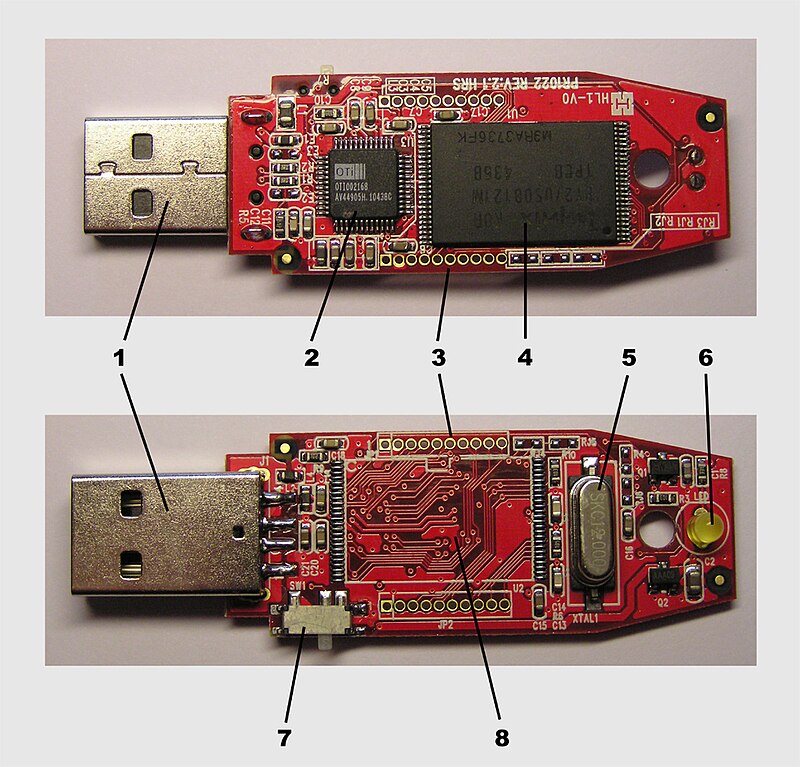
- Connettore USB;
- Processore;
- Pin di controllo;
- NAND Chip;
- Oscillatore;
- Led;
- Protezione scrittura ON/OFF;
- PCB.
Approfondimenti
Se ti interessano le informazioni tecniche sui file system puoi proseguire su uno dei seguenti articoli:
- File System NTFS, HFS+, EXT4, APFS, XFS, FAT32;
- Cos’è un sistema RAID, RAID 0, RAID 1, RAID 5, RAID 6, RAID 10
- Recuperare i dati da un SSD;
- Recuperare i dati da un NAS;
Richiedi subito un’analisi gratuita se hai necessità del nostro supporto per recuperare i tuoi dati persi
continua a leggere...


